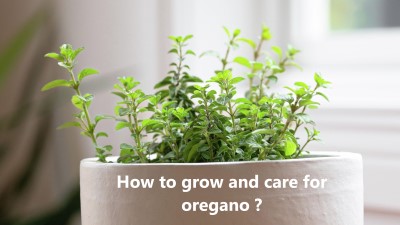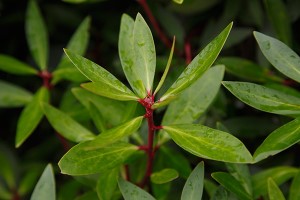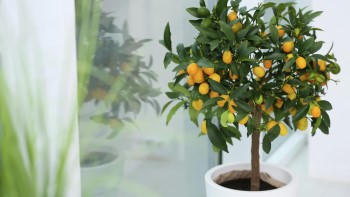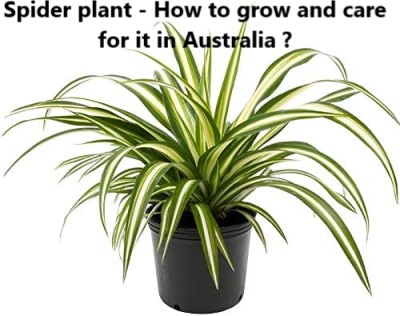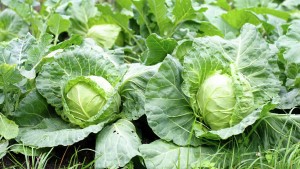- Houseplants
- 4,659
Oregano is a popular herb that is found in many kitchens across the world. It is often used in Italian, Greek, and Mexican cuisines, as well as other dishes that involve herbs and spices. It has a unique flavor that can enhance the taste of many dishes. But beyond its culinary uses, oregano has many health benefits that you may not be aware of.
Here at Garden Pie, we shall look into growing and caring for oregano.
Table of contents [Show]
What you need to know about oregano
Oregano is an herb belonging to the mint family. It is native to the Mediterranean region, but is now found in many places around the world. The leaves of the plant are used in cooking, and the oil is used for medicinal purposes. The herb is rich in antioxidants, vitamins, and minerals, and is known to have anti-inflammatory, anti-bacterial, and anti-fungal properties.
It is an excellent source of vitamin K, which helps keep bones and teeth strong. Vitamin K is also important for healthy blood clotting. Oregano also contains thymol, which is an antioxidant that can help reduce inflammation and oxidative stress. Additionally, oregano is rich in plant compounds called phytochemicals. These compounds can help fight off bacteria and viruses, and may also reduce the risk of certain cancers.
The herb has also been used for centuries to treat a variety of ailments, including digestive issues, respiratory infections, and skin conditions. Oregano oil has been used to treat fungal infections, as well as to ease joint and muscle pain.
It can be used fresh or dried, and is available in many grocery stores. It can be added to salads, sauces, and marinades, and can be used to season meats and vegetables. Oregano oil can be used topically, and is available at health food stores. However, it is important to note that oregano oil can be toxic if taken in large quantities. It is recommended to speak with your healthcare provider before taking oregano oil orally.
Facts about oregano includes:
- Name: oregano, Greek oregano, Mexican oregano, golden oregano, Origanum vulgare, wild marjoram, Mediterranean oregano.
- Height: usually only 20cm high.
- Foliage: evergreen perennial.
- Climate: grows well in cold temperate, warm temperate and arid/semi-arid climates. In tropical and sub-tropical areas, grow in pots to protect from rain during the wet.
- Soil: grows well in most well-drained soils or premium potting mixes.
- Position: full sun to part shade.
- Flowering and fruiting: tiny pink or white flowers are usually produced in summer.
- Feeding: regular applications of fertiliser are not required.
- Watering: allow soil or potting mix to dry between waterings. Do not overwater.
Appearance , characteristics and Nutritional Value of oregano
Oregano is an herbaceous perennial plant in the mint family, native to the Mediterranean region, and commonly found in many kitchens across the globe. It is an indispensable ingredient in cuisines of the Mediterranean, Mexico, and Latin America.
Appearance
- Oregano is a small, shrubby, bushy plant with small, oval-shaped leaves.
- The leaves are dark green, somewhat leathery and can have a sharp, bitter taste. It's flowers are small, white, and clustered in small whorls.
- The flowers form on small stalks and are not particularly showy, but they do provide some visual interest.
Characteristics
- Oregano has a strong, pungent, and slightly bitter flavor.
- It is often used in cooking to enhance the flavor of dishes, especially in Italian and Mediterranean dishes.
- It is also used to make a herbal tea, which is said to have medicinal properties.
Nutritional Value
- Oregano is a rich source of minerals and vitamins, including vitamins A, C, K, and B6, as well as iron, potassium, calcium, and magnesium.
- It also contains flavonoids, which are antioxidants that may help protect against certain diseases.
Uses for oregano
Oregano is an herb with a strong, pungent flavor that many cultures around the world use in cooking. It is a member of the mint family, and is native to the Mediterranean region. In addition to its culinary uses, oregano has been used medicinally throughout the ages.
Here are some of the primary uses of oregano:
Cooking
Oregano is a key ingredient in many Italian and Greek dishes, such as pizza, pasta sauces, and grilled meats. It can also be used to season vegetables, soups, stews, and sauces.
Medicinal Uses
Oregano has been used as an herbal remedy to treat a variety of ailments, including digestive problems, headaches, colds and flu, and skin conditions. It is believed to have antiseptic, antifungal, and antiviral properties, and is often used as a natural remedy for sore throats and chest congestion.
Aromatherapy
Oregano essential oil is a popular choice for aromatherapy due to its strong, spicy aroma. It is believed to have calming and soothing properties, and is often used to help reduce stress and anxiety.
Perfumes
Oregano essential oil is used in some perfumes and colognes due to its strong, spicy scent.
Household Cleaning
Oregano essential oil is a natural disinfectant, and can be used to clean and deodorize surfaces in the home.
Insect Repellent
Oregano essential oil can be used to repel insects such as fleas, ticks, and mosquitoes.
How to plant and grow oregano ?
Growing oregano is a great way to add the fragrant and flavorful herb to your garden.
Growing oregano in pots:
Growing oregano in pots is a great way to have fresh herbs at your fingertips.
It is a fragrant, flavorful herb that has many culinary uses. Whether you are looking to add flavor to your favorite dishes or create a fragrant container garden, growing oregano in pots can be a fun and rewarding experience.
Here are a few tips to help you get started:
- Choose an Appropriate Pot: When selecting a pot for your oregano, opt for a container that is at least 12 inches wide and 12 inches deep. This will give the roots plenty of room to spread out and your oregano plenty of space to grow.
- Choose the Right Soil: Oregano prefers well-draining soil, so make sure to select a potting mix that is specifically designed for container gardens. You can also add a bit of compost or other organic matter to the soil for added nutrition.
- Plant the Seeds: Plant your oregano seeds about an inch deep into the soil and keep them moist until they begin to sprout. Once the seedlings have grown a few inches, you can thin them out to give the strongest plants plenty of room to grow.
- Provide Adequate Sunlight: Oregano needs plenty of sunlight to thrive, so make sure to place the pot in an area that gets at least six hours of direct sunlight a day. If you are growing oregano indoors, make sure to place the pot near a sunny window.
- Water Regularly: Keep the soil of your oregano pot moist but not soggy. Water your oregano when the top inch or two of soil has dried out.
- Fertilize: Fertilize your oregano every few weeks with a balanced fertilizer to keep it healthy and help it produce plenty of flavorful foliage.
Growing oregano in the garden:
Before planting oregano, you should make sure that you have the right kind of soil.
- Oregano prefers well-drained soil that is slightly on the acidic side. If you have soil that is too alkaline, consider amending it with a bit of peat moss.
- You should also make sure that the soil is not too soggy, as oregano does not do well in standing water.
- When ready to plant, oregano seeds can be sown directly into the garden. Alternatively, you can also purchase potted oregano plants from your local garden center. When planting, make sure to space the plants around 12 inches apart.
- When planting oregano, make sure that it is placed in an area that receives plenty of sunlight. Oregano needs at least 6 hours of sunlight a day to thrive.
- Additionally, oregano needs to be watered regularly, but not too much. Overwatering can lead to root rot, so make sure that the soil is allowed to drain.
- It can be harvested throughout the growing season.
- To get the most flavor, remove the leaves before the plant flowers. You can either use the oregano fresh or dry it for later use.
- To dry, hang the stems upside down in a dark, dry place for a few days. Once dry, store the oregano in an airtight container.
Caring for oregano
If you want to get the most out of your oregano, it is important to take proper care of your plant.
Here are some tips to help you properly care for your oregano:
- Location: Oregano prefers to be planted in a location that gets plenty of sun, with at least 6 hours of direct sunlight each day. If you live in a colder climate, it is best to plant it in a pot and bring it indoors during the winter months.
- Soil: Oregano requires well-drained soil that is rich in organic matter. It is important to keep the soil moist but not soggy.
- Watering: Oregano should be watered regularly throughout the growing season. The soil should be kept moist but not soggy. It is best to water the plant deeply, so the water reaches the roots.
- Fertilizer: Oregano does not require a lot of fertilizer, but a light feeding once or twice a month will help promote healthy growth.
- Pruning: Pruning is an important part of caring for oregano. Pruning helps to keep the plant neat and encourages new growth. Cut back the stems to about half their length every few weeks during the growing season.
- Harvesting: Oregano can be harvested throughout the growing season. The leaves can be used fresh or dried for later use. To dry oregano, cut the stems and hang them upside down in a dark, well-ventilated area.
Diseases and pests affecting oregano
Oregano can easily be affected by diseases and pests. These problems can reduce the amount of oregano that can be harvested, reducing the amount of the herb available for use in cooking. In order to protect oregano plants from these issues, it's important to understand the common diseases and pests that can affect them.
Diseases
1. Root Rot
One of the most common diseases that can affect oregano is root rot.
- This is caused by a fungus and can cause wilting, yellowing, and stunted growth. The disease is spread by water and soil that contains the fungus and can easily spread to other plants in the area.
- To prevent root rot, it's important to use well-draining soil and avoid overwatering.
2. Powdery Mildew
Another common disease that can affect oregano is powdery mildew.
- This fungal disease causes white spots on the leaves and can lead to leaf yellowing and wilting.
- It is spread by wind and can quickly spread to other plants in the area.
- To prevent powdery mildew, it's important to provide plenty of air circulation and avoid overcrowding.
Pests
Pests can also affect oregano plants.
1. Aphids
- Aphids are a common pest of oregano and can cause leaf yellowing and stunted growth.
- These bugs are spread by wind and can quickly spread to other plants in the area. To prevent aphids, it's important to keep the area clean and remove any affected plants.
2. Slugs and Snails
- Finally, slugs and snails can also be a problem for oregano plants.
- These pests feed on the leaves of the plants and can quickly damage them.
- To prevent slugs and snails, it's important to use barriers to keep them away from the plants, such as mulch or eggshells.
How to harvest oregano ?
Harvesting oregano is a straightforward process and with a few simple steps, you can harvest your oregano and enjoy its unique flavor:
- Collect your tools. You'll need sharp shears, a basket or bag for collecting your oregano, and gloves to protect your hands from the sharp leaves.
- Choose a spot. Look for a sunny spot to harvest your oregano. The herb should be harvested before it flowers, so look for small, bright green leaves.
- Cut the stems. Put on your gloves and use the shears to cut the oregano stems at the base. Make sure to cut the stems just above a leaf set so that the plant can regrow.
- Collect and store. Place the stems in the basket or bag and store them in a cool, dry place until you're ready to use them.
- Use your oregano. Oregano is a flavorful addition to sauces, stews, and other dishes. If you're not using it right away, you can dry it for future use.
How to propagate oregano ?
Oregano is also a popular choice for home gardeners because it is easy to grow and propagate.
Here is how to propagate oregano in your own garden:
- Start with a healthy oregano plant. If you are purchasing an oregano plant from a nursery, make sure it is healthy and free from disease.
- Cut a piece of oregano from the mother plant. Take a pair of sharp scissors and cut off a 4-inch piece from a healthy branch of the mother plant. Make sure the piece has at least two sets of leaves.
- Prepare the cutting. Trim off the bottom leaves and the top of the cutting to leave two sets of leaves. Dip the cutting in a rooting hormone.
- Plant the cutting. Fill a pot with a mixture of soil and compost. Make a hole in the center of the pot and insert the cutting. Gently press the soil around the cutting to secure it in place. Water the pot until the soil is moist.
- Place the pot in a sunny spot. Oregano prefers full sun, so choose a spot in your garden that gets at least 6 hours of direct sunlight every day.
- Care for the cutting. Water the cutting when the soil feels dry to the touch. Once the plant is established, you can fertilize it with a balanced liquid fertilizer.
- Harvest the oregano. Once the oregano has reached a mature size, you can start harvesting it. Take a pair of scissors and snip off the leaves, making sure to leave some leaves on the plant for continued growth.
How to go about Layering oregano ?
Layering oregano is an easy and effective way to keep your oregano plants healthy, productive, and attractive. Layering is a method of propagating herb plants, and oregano is one of the easiest herbs to layer.
Here is how to go about layering oregano:
- Select a healthy oregano plant with long stems and plenty of leaves. Choose a stem that is at least 4 to 6 inches long and preferably one that has a good number of young leaves.
- Cut the stem at an angle, about 2 inches below the lowest set of leaves. Make sure the cut is clean and smooth.
- Bend the stem so that the cut end is slightly buried in the soil. This will help support the stem and keep it in place.
- Tie the stem. Tie the stem to a stake or other support structure to help keep it in place.
- Water the stem. Water the area around the stem but be careful not to overwater as this can cause the stem to rot.
- In a few weeks, roots should begin to form from the cut end of the stem. Once the roots have formed, you can carefully detach the new plant from the original and move it to a new location.
Conclusion
Growing oregano is a simple yet rewarding process as shown in this guide. In fact, Oregano is a popular herb used in many dishes and sauces. It is known for its strong, pungent flavor and aroma. But in order to get the most out of oregano, it is important to care for it properly.
Here are 15 ways to ensure that your oregano stays fresh and flavorful:
- Choose fresh oregano. When buying oregano, look for bright green leaves that are fragrant and free from blemishes.
- Store oregano in a cool, dark place. Oregano should be stored in a cool place away from direct sunlight.
- Keep oregano dry. Moisture can easily cause oregano to spoil, so it's important to keep it dry.
- Refrigerate oregano. If you're storing oregano for an extended period of time, it's best to keep it in the refrigerator.
- Freeze oregano. Oregano can also be frozen for longer storage.
- Use oregano quickly. Oregano loses its flavor and aroma over time, so it's best to use it quickly.
- Use air-tight containers. When storing oregano, make sure to use air-tight containers to keep out moisture and light.
- Discard wilted oregano. If your oregano looks wilted or has a bad odor, discard it immediately.
- Grow oregano indoors. If you don't have access to fresh oregano, you can easily grow it indoors.
- Water oregano regularly. To keep oregano healthy, water it regularly and make sure it's not too dry.
- Prune oregano. Pruning oregano regularly will help it stay healthy and productive.
- Pinch off flowers. To keep oregano from going to seed, pinch off any flowers as soon as they appear.
- Feed oregano. Feed oregano with a balanced fertilizer every two weeks to keep it healthy.
- Pest-proof oregano. To keep oregano pest-free, make sure to check it regularly for signs of insects or disease.
- Harvest oregano. When the oregano is ready, harvest it carefully and use it quickly.
By following these tips, you can ensure that your oregano stays fresh and flavorful. Enjoy!
